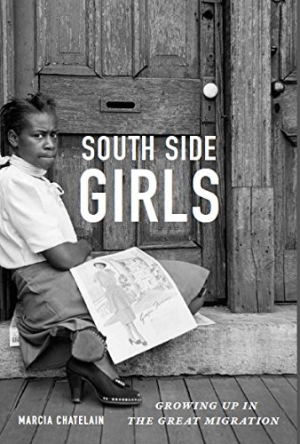South Side Girls
Growing up in the Great Migration
Chatelain has done an outstanding job of identifying childhood experiences for Chicago’s young black girls.
The Great Migration (1910-70) saw six million African Americans leave the Jim Crow South for cities in the northern and western United States, which held the promise—if not often the reality—of better-paying jobs, more educational opportunities, and a better quality of life. Marcia Chatelain, assistant professor of history at Georgetown University, presents a fascinating and significant assessment of the childhood of South Side Chicago African American girls, age eighteen and younger, during the migration’s crushing social, economic, and cultural upheavals. The author concentrates on the first Great Migration (1910-1940), when the South Side’s African American population surged from 44,000 to 234,000.
This is the first book-length investigation of girlhood during the Great Migration. Although it is based on the author’s doctoral dissertation, it is mostly free of academic jargon; this work is more notable for its flowing attention-holding writing than it is for minutiae that would likely overwhelm non-scholars. Included are many entertaining stories the author has plumbed from diaries, African American newspapers, and archives.
The author’s overarching quest is to assess what childhood was like for young African American girls during these hardscrabble years. The need to help support families when limited employment opportunities existed for black children and adults, especially during the Depression, left little time for childhood activities. Yet Chatelain offers convincing cases that childhood for African Americans was made possible by such schools as the Wendell Phillips High School, one of the few excellent secondary public schools for blacks. Also, youthful pleasures were enhanced by cosmetic products aimed at young black girls with some meager disposable income and the Camp Fire Girls, enabling young black and white girls to interact. These are only a few of the institutions the author identifies as helping to define childhood for young black girls.
Perhaps this work will inspire scholars to undertake similar studies of other cities during the Great Migration to determine whether this book’s conclusions are universal, or unique to Chicago’s South Side.
Reviewed by
Karl Helicher
Disclosure: This article is not an endorsement, but a review. The publisher of this book provided free copies of the book to have their book reviewed by a professional reviewer. No fee was paid by the publisher for this review. Foreword Reviews only recommends books that we love. Foreword Magazine, Inc. is disclosing this in accordance with the Federal Trade Commission’s 16 CFR, Part 255.

